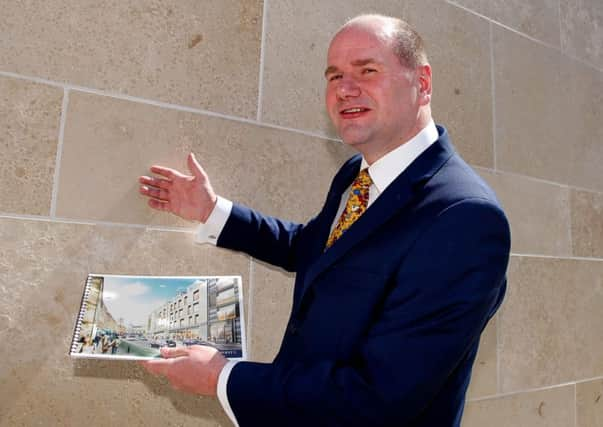£850m St James plan chiefs unhappy with limestone


City officials have recommended councillors grant planning permission for the bulk of Edinburgh St James at a meeting next week.
However, plans to use limestone cladding on the outside of much of the complex have been dealt a blow after city officials described it as an “alien” product for the New Town that would “detract” from the area.
Advertisement
Hide AdAdvertisement
Hide AdThe upmarket complex of boutiques, restaurants, apartments and a five-star hotel is set to transform an unloved area of the city centre into a shopping mecca to rival top retail destinations across the UK.
But developer TH Henderson Real Estate warned that an insistence on sandstone could hamper its ability to deliver the project “as planned”.
It argued that sandstone is too expensive, too brittle and too difficult to obtain in the quantities needed.
The new report by city planners states: “The continued use of sandstone spans 250 years, from the inception of the New Town, with buildings such as Register House, right through to recent developments like Multrees Walk and Harvey Nichols.
“The extensive use of limestone would detract from that character, being alien in its appearance and weathering characteristics.”
One square mile of natural stone cladding is required to cover the lower surfaces of the scheme, with upper levels covered in reconstituted stone cladding.
Development director Martin Perry has revealed how his firm scoured 30 quarries across Europe to find a supplier able to provide the volume of stone required to the right standard.
Using smaller amounts of sandstone from different quarries could produce a “Battenberg effect”, it has been warned, with a patchwork of different-coloured panels giving a poor overall appearance.
Advertisement
Hide AdAdvertisement
Hide AdMr Perry said: “We welcome the city council’s recommendation for approval and now look ahead to the committee’s decision in the coming week.
“We have given careful and thorough consideration to every aspect of the planning applications and are confident we have selected a high-quality material that will complement the surrounding buildings and streetscape. A golden beige limestone has been selected for its superior qualities of resilience and strength – it is the material of choice for a number of prestigious projects around the world.
“Crucially, limestone offers us security of supply to deliver the regeneration, which sandstone does not. It has not been possible to identify a source of sandstone that can be made available and of sufficient quality and consistency within a quantifiable period, to enable the project to proceed as planned.”
Tom Parnell, who heads the Edinburgh chapter of the Architectural Heritage Society of Scotland, said: “The society has been concerned about the number of concrete boxes with a thin veneer of sandstone – it’s the equivalent of architectural wallpaper.
“Saying that, if it was a choice between limestone and sandstone, Edinburgh is not a limestone city, it is a sandstone city. We would expect good quality sandstone to be used. Limestone would be a strange choice.”